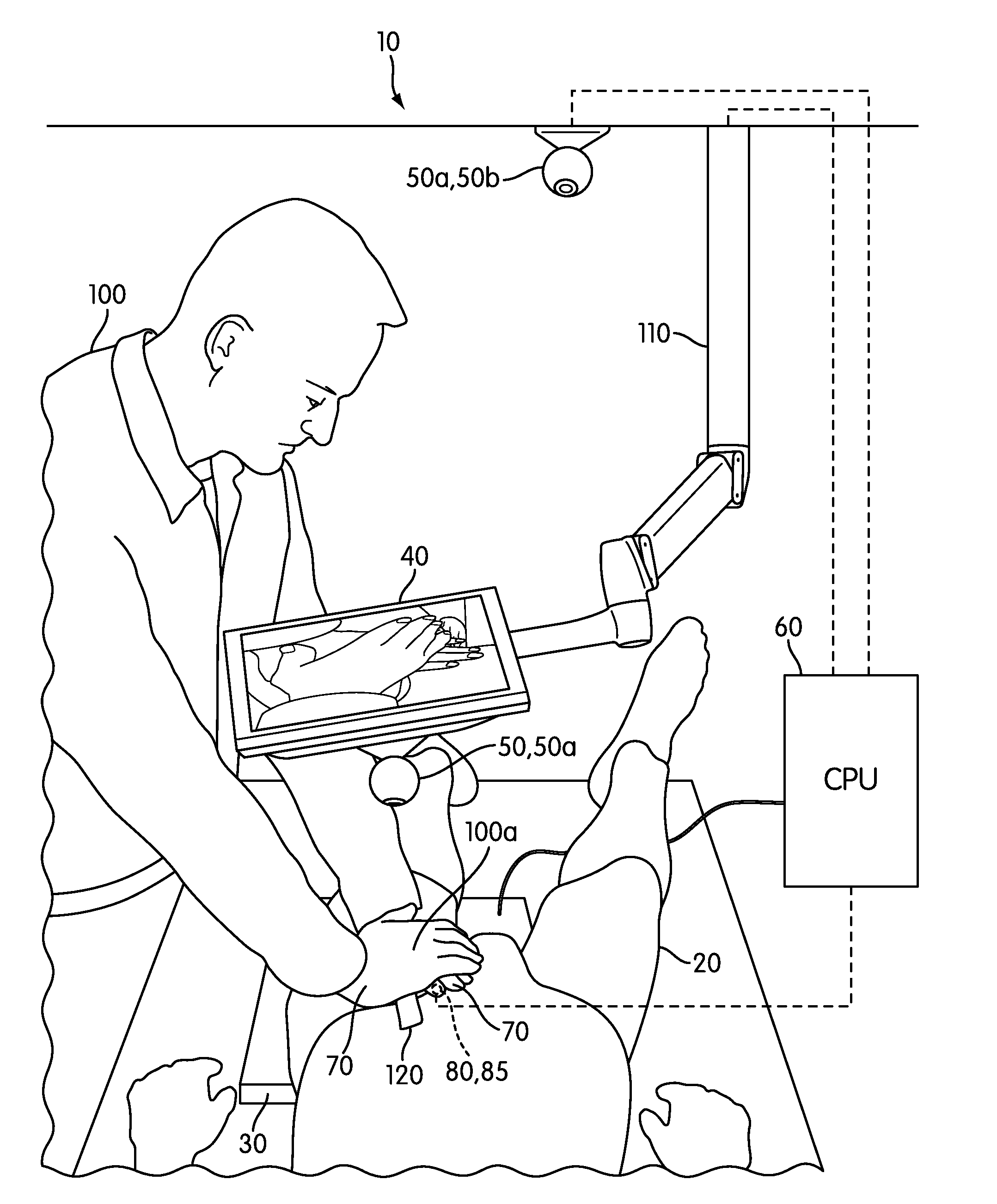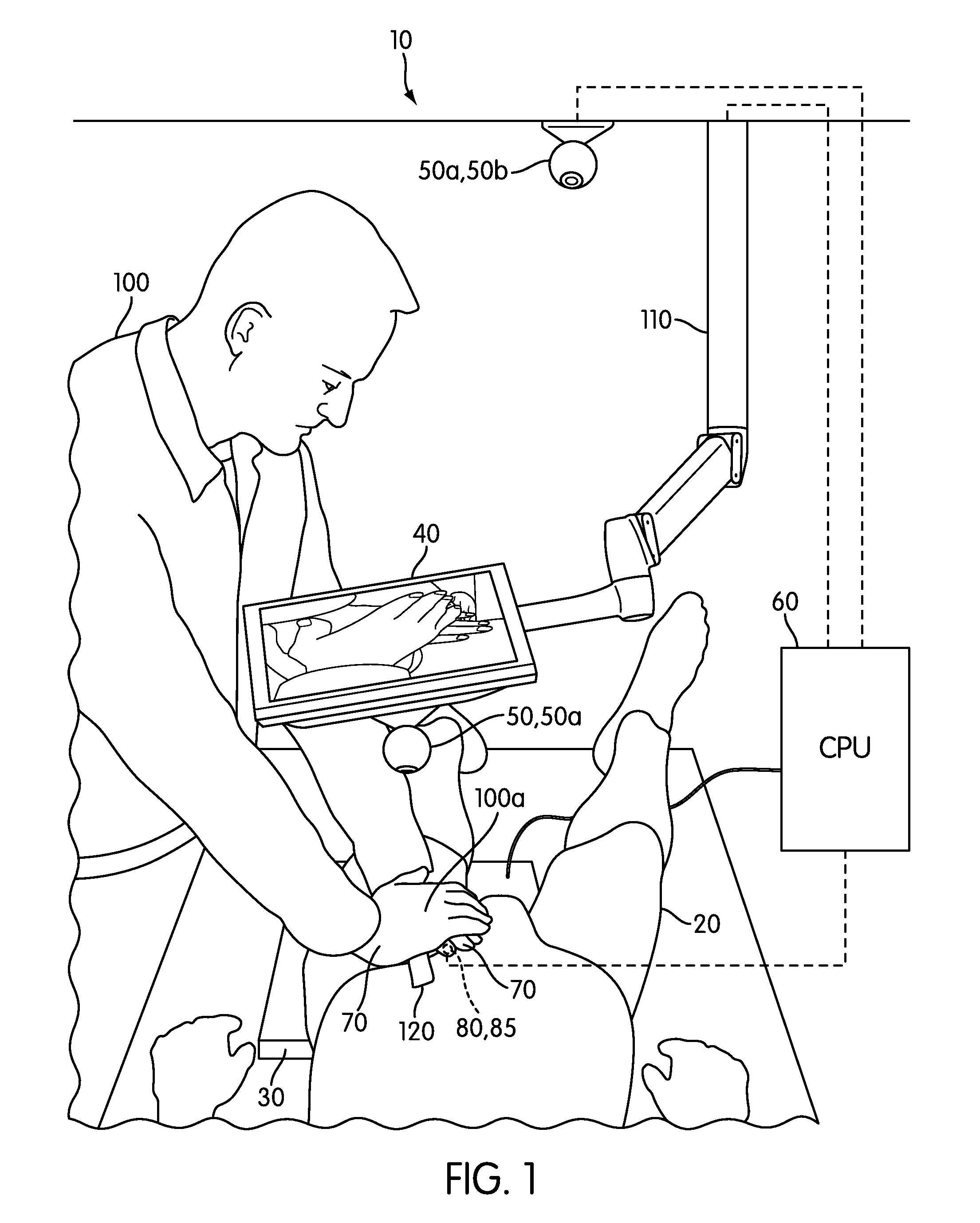Hemorrhage control simulator
a simulator and hemorrhage technology, applied in educational appliances, instruments, educational models, etc., can solve the problems of ineffective stopping blood loss, inability to learn, and use of tourniquets may sacrifice more limbs than is needed to stop hemorrhaging, so as to optimize training effectiveness, maintain skills, and evaluate retention.
- Summary
- Abstract
- Description
- Claims
- Application Information
AI Technical Summary
Benefits of technology
Problems solved by technology
Method used
Image
Examples
Embodiment Construction
[0010]For extremity injuries, teaching proper tourniquet technique can be a messy and taxing business due to the manually controlled bleeding systems used in the mannequins. U.S. Patent Application Publication No. 2009 / 0011394, titled “LIMB HEMORRHAGE TRAUMA SIMULATOR,” describes a simulator for training with respect to limb traumas. The entire contents of U.S. Patent Application Publication No. 2009 / 0011394 are hereby incorporated by reference herein.
[0011]In addition, the variety and complexity of scenarios that can be used to provide medics with experience is limited by the practical realities of using these mannequins. In the case of bleeding that is not amenable to tourniquets for its control, the training options are much more limited. While in the past several years the introduction of a variety of hemostatic agents has become wide spread for these situations, there are limited means at present for teaching medics to use these products that allows them to experience the real ...
PUM
 Login to View More
Login to View More Abstract
Description
Claims
Application Information
 Login to View More
Login to View More - R&D
- Intellectual Property
- Life Sciences
- Materials
- Tech Scout
- Unparalleled Data Quality
- Higher Quality Content
- 60% Fewer Hallucinations
Browse by: Latest US Patents, China's latest patents, Technical Efficacy Thesaurus, Application Domain, Technology Topic, Popular Technical Reports.
© 2025 PatSnap. All rights reserved.Legal|Privacy policy|Modern Slavery Act Transparency Statement|Sitemap|About US| Contact US: help@patsnap.com



